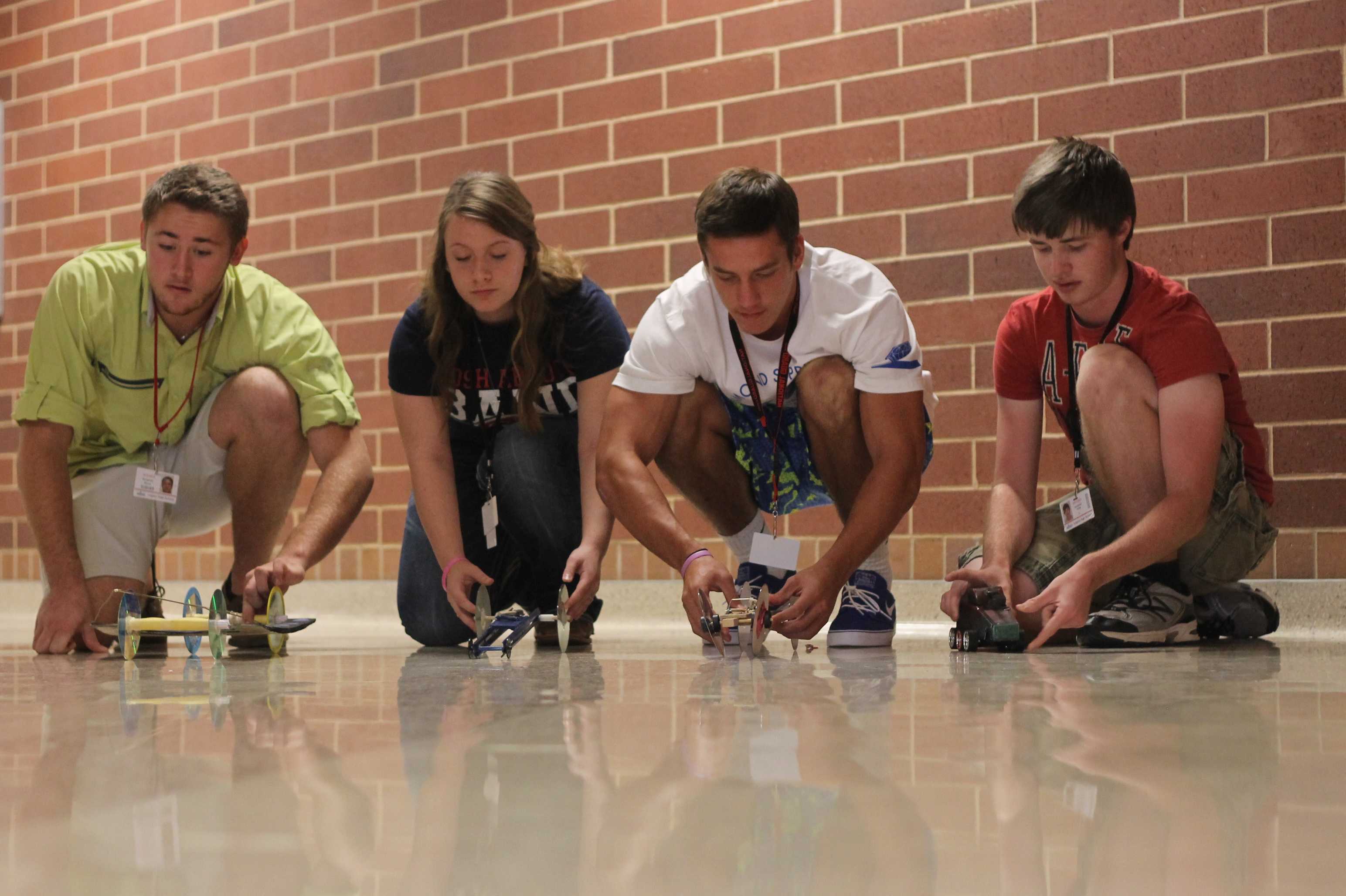Senior Peeti Sithiyopasakul delicately places the baseball into the bra cup, which serves as the unorthodox sling of his nearly seven-foot tall trebuchet that he named “Ze Pink Panther.” He slowly takes his hand off the lever arm and releases his grip on the sling only seconds after. The class’s eyes follow the ball as it swings into the air, clears the sidewalk and lands in the field behind the cafeteria, 36 meters away.
“I really learned about how physics is applicable to everyday life,” Sithiyopasakul said. “I was able to take the equations we learned in the classroom to the outside world and actually apply them to a project.”
Building trebuchets is only one of the projects that science teachers assign students to help them learn more about physics. The projects focus on developing critical thinking skills and understanding the fundamental concepts behind the assignment.
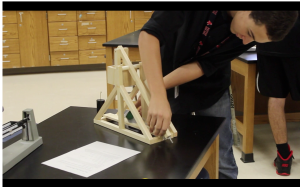 “We had a very extensive testing process where we calibrated the trebuchet, and we actually had a set of plans that we modified to use for this one,” Sithiyopasakul said.
“We had a very extensive testing process where we calibrated the trebuchet, and we actually had a set of plans that we modified to use for this one,” Sithiyopasakul said.
Walter Lewin, a renowned professor at MIT, is an example of how physics demonstrations have excited students about the subject. His videotaped lectures feature him riding a fire-extinguisher-propelled tricycle, beating students with cat fur, and firing a golf ball-loaded cannon at a stuffed monkey, among other things. Lewin receives emails from fans all over world, praising him for his entertaining experiments. They write that they’re inspired by the videos and are discovering a love for science because of them. Lewin’s demonstrations make the concepts plain to students who otherwise have trouble understanding physics. He’s able to make such an impression that the ideas remain etched in their minds.
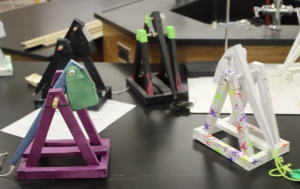
“I can make students laugh, and I can make them cry,” Lewin said in an interview with MIT Technology Review. “I can make them sit on the edge of their seats, and I can make them stop breathing.”
Legacy’s residential physics teachers assigned projects that have a similar effect by getting students enthusiastic about a subject known for its more challenging aspects. Going a step further, students conduct experiments and create projects of their own. Students in Mr. John Davis’ class built trebuchets to help them learn more about range, angle, and velocity. They experienced first-hand how the properties of physics work by constructing the trebuchet and learning how the elements involved relate to each other.
“Trebuchets are a fun way to throw something through space,” Mr. Davis said. “[Students] have some pretty complex calculations they have to do, finding those speeds and things after they’ve built the trebuchets.”
Some students, like Sithiyopasakul, went beyond the standard paper trebuchet and created “monster” trebuchets using an assortment of materials.
“There were a lot of groups that had a lot of really cool trebuchets that I saw,” Mr. Davis said.
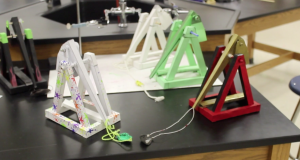
Ms. Michelle Hurst assigned her students to build mousetrap cars to teach them about speed, velocity, and acceleration, and introduce them to the subject of force. Students made their self-propelled cars with anything that would work, including Legos, balloons, and even nitrous.
“[You need] a mousetrap, and after that, pretty much anything goes,” Ms. Hurst said. “Mainly you need something for a base, two axles, and then some wheels.”
Students paid special consideration to aerodynamics and carefully selected their materials accordingly. Junior Benjamin Mouw used a wide frame and rubber bands to make his car go the farthest in his class.
“If your wheels are straight, and how far you twist the back wheel makes the axle spin farther, so it makes it go fast,” Mouw said.
Projects like the trebuchets and mousetrap clarify what is learned in the classroom and help students get a better idea of the practical application of physics. According to the University of Illinois, 50 percent of students are kinesthetic learners (meaning they learn best through movement and manipulation) and 40 percent are visual learners (who learn best by watching). Since 90 percent of students learn best through seeing and touching, these interactive projects provide an ideal learning environment to teach physics to students.
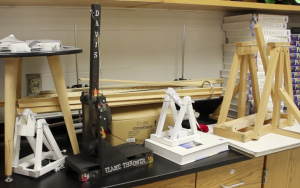 “Through the practice and application of physics I was able to achieve a better understanding of how the various formulas and equations were important,” junior Michael Peterson said.
“Through the practice and application of physics I was able to achieve a better understanding of how the various formulas and equations were important,” junior Michael Peterson said.


